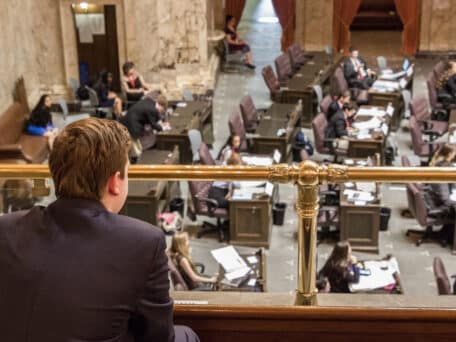Yesterday, we showed you how outside environmental groups are funding consultants to develop Gov. Jay Inslee’s “green” policies. After a dive into records released by the Inslee administration, Shift noted five “lowlights” from grant proposals made by attorney and former Gregoire administration chief of staff Jay Manning to private environmental groups.
Today, a bonus lowlight from Manning. Writing in Jan. 2013, Manning enthused to his private funders that incoming governor Inslee was their great hope, a man who “literally wrote the book on clean energy job creation.” He also wrote:
“The commitment of West Coast leaders to climate and clean energy action is further bolstered by the election in Washington State of Governor Jay lnslee who is a recognized national leader on energy and climate issues. Capturing this unique window of opportunity, however, will require effective ongoing coordination to ensure that strategy and policy alignment and implementation momentum do not get mired in the daily realities of governing.” [emphasis added]
Of course, Manning had nothing to fear. He’s talking about the governor who
- walked away from negotiations on a transportation package when this year’s legislative session started and did nothing to negotiate a deal between Republicans and Democrats
- while in Congress, wouldn’t do anything to help Rep. Dave Reichert’s wilderness bill because “we want to beat your ass” in the next election
- who spends his time sucking up to billionaire environmentalist Tom Steyer in hopes of getting a slice of the $100 million Steyer says he will spend on politics this year
So really, there was no need to worry, Mr. Manning. Jay Inslee is a man who has never been “mired in the daily realities of governing.” Makes sense for a man who thinks a lot about our place in the solar system.




